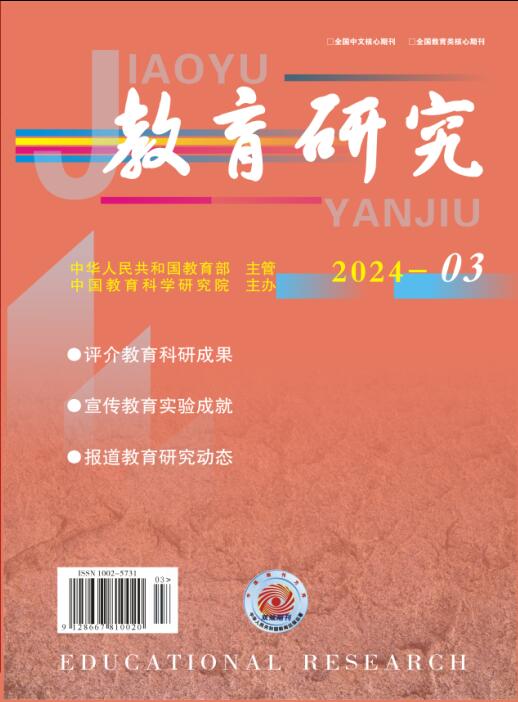刊名: 教育研究
主办: 中国教育科学研究院
周期: 月刊
出版地:北京市
语种: 中文;
开本: 大16开
ISSN: 1002-5731
CN: 11-1281/G4
邮发代号:2-277
历史沿革:
专题名称:教育理论与教育管理
期刊荣誉:社科双效期刊;国家新闻出版总署收录;中国期刊网核心源刊;CSSCI 中文社会科学引文索引来源期刊;北京大学《中文核心期刊要目总览》来源期刊;
创刊时间:1979
英语句式中的特殊结构——独立主格结构
【作者】 刘 戈
【机构】 甘肃嘉峪关市第六中学
【摘要】【关键词】
独立主格结构(Absolute Construction)是一种特殊的结构,可以理解为在句子作状语的短语。该结构不是句子,也不是从句,所以它内部的动词不能考虑其时态、人称和数的变化,它的逻辑主语与主句的主语是不一致的,独立存在的。其实,所谓“独立主格结构”也并非真正独立,它还是一种从属的结构。
一、独立主格结构的概念
独立主格结构可以表示时间、原因、条件、方式或伴随情况等,在句子中充当状语,用于修饰整个句子。独立主格结构大体分为两种,一种“逻辑主语+逻辑谓语”结构,一种是“with/without+宾语+宾语补足语”结构。其中逻辑主语和宾语组成相同,逻辑谓语与宾语补足语组成相同。
二、独立主格结构,也称“逻辑主语+逻辑谓语”结构
1、“名词或代词+非谓语动词”结构
“名词或代词+非谓语动词”结构也称为“有动词独立主格结构”。
(1)不定式:往往表示没有发生或即将发生的行为或状态。
①不定式主动形式
例句:His mother to come tonight,he is busy preparing the dinner.
他母亲今晚要来,他正在忙着准备饭菜。
(= As his mother is to come tonight, he is busy preparing the dinner.)
②不定式被动形式
例句:Many trees,flowers ,and grass to be planted ,our newly-built school will look even more beautiful.? 种上许多的树,花和草后,我们新建的学校将看上去更美。
(=If many trees ,flowers ,and grass are planted ,our newly-built school will look even more beautiful.)
(2)现在分词:表示正在进行的动作或状态。
例句:The man lay there, his hands trembling.那个男子躺在那儿,双手在颤抖。(表伴随)
(=The man lay there, and his hands were trembling。)
【注】独立主格结构中的being和having been 常省略。
例句:The weather (being) fine ,we decided to go swimming.
天气晴朗,我们决定去游泳。
【注】当独立主格结构中的“being done”表示“正在被做时”,“being”不可省略。
当独立主格结构的逻辑主语是it、there时,“being”不可省略
例句:Food being cooked,I fell asleep. 正做着饭,我睡着了。
There being no time left,we had to speed up. 剩下的时间不多了,我们只好加快了速度。
(3)过去分词:表示已经完成的被动行为。
例句:The girl sat there silent ,her head bent low.这姑娘一声不响,低着头坐在那里。(表伴随)
2、无动词独立主格结构
这种结构往往看做是“名词/代词+being+表语”结构中省略了being。
(1)逻辑主语+名词
例句:Many people joined in the work, some of them women and children.
许多人参加了这项工作,其中一些人是妇女和儿童。
(some of them和women之间省去了being)。
(2)逻辑主语+形容词
例句:He turned to me, his eyes sleepy.他睡眼惺忪地转向我。
(his eyes和sleepy之间省去了being)
(= He turned to me, and his eyes were sleepy. )
(3)逻辑主语+副词
例句:School over, we all went home. 放学了,我们都回家了。
(school和over之间省去了being)
(= School was over, and we all went home. )
(4)逻辑主语+介词
例句:The teacher came into the classroom,(a) rule in (his) hand.
老师走进教室,手里拿着一把直尺。
(= The teacher came in and a ruler was in his hand.)
【注】在“逻辑主语+介词短语”构成的独立主格结构里,如果名词用单数,可以不用冠词,同时介词短语里的限定词也可省略。
例句:The teacher came into the classroom,rule in hand.
三、with/without+宾语+宾语补足语结构
几乎所有的独立主格结构都可以在其逻辑主语前加上“with”构成“with”结构,在句子常作状语、定语,表达相反的意义时用“without”。
1、with和without复合结构除了做状语外,还可以作后置定语修饰名词,而独立主格结构则不可作后置定语修饰名词。
例句:Soon she arrived at a park with grass green and flowers in blossom.
很快她来到一个充满绿草和鲜花盛开的公园。
(=Soon she arrived at a park whose grass was green and whose flowers were in blossom.)
2、在with/without结构中,多数情况下with能省略,但without 不能省略。
例句:Without a word more spoken,she left the meeting room.
她没再说什么话就离开了会议室。(without不能省略)


